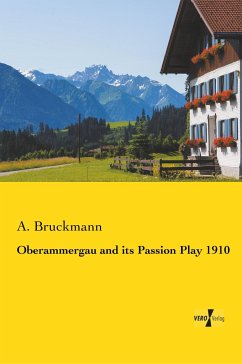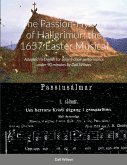"The village of Oberammergau (1700 inhabitants) occupies a considerable portion of the valley in which it lies and its situation gives it the character of a real mountain village. It is shut in on the west, south and east by partially wooded heights. In the south, towers the striking form of the Kofel (4403 ft.), which with its precipitous sides is, to a certain extent, the distinctive feature of Oberammergau. On the summit of this bold jagged mountain peak, there is a cross 50 ft. high, overlaid with tin-plate, the glitter of which can be seen from a long distance. As early as the end of the 16th century, a huge wooden statue of a knight stood in this place, given by a Nürnberg merchant, still further south, is the massive mountain peak, the Not (6200 ft.) while to the south-east, the Labergebirge, with the Ettaler Mannl (5262 ft.), rise. In the east the Lainetal forms a deep indentation in the mountain chain, which is continued to the north east of Oberammergau by the Aufacker (5059 ft.), to the north by the Hoernle (5082 ft.). The western termination of the valley is formed by the slopes of the Stoeckelberg with the Kolben a spur of the Sonnenberg, the culminating point of which, the Zahn (5971 ft.), is invisible from the village.
This reprint is a guide to the famous Passion Play in Oberammergau from the year 1910. It describes the play itself, different Bavarian cities like Munich including historic routes from Munich to Oberammergau and of course the famous town of Oberammergau in the Alps itself.
This reprint is a guide to the famous Passion Play in Oberammergau from the year 1910. It describes the play itself, different Bavarian cities like Munich including historic routes from Munich to Oberammergau and of course the famous town of Oberammergau in the Alps itself.








